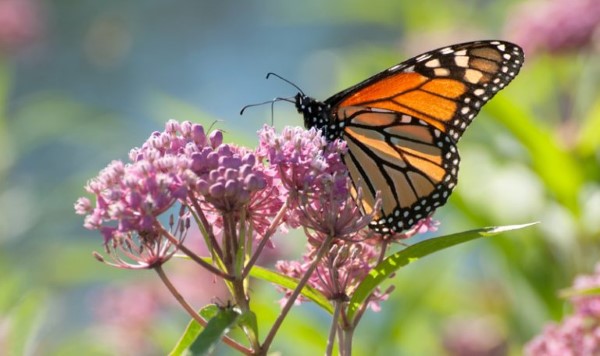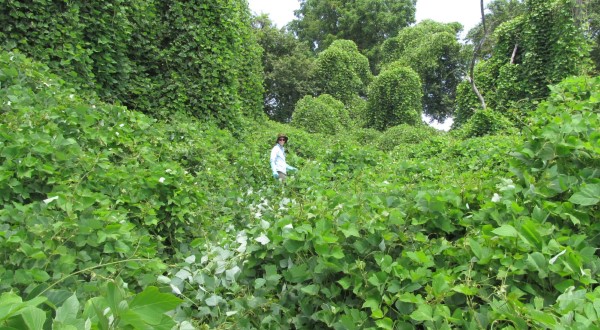
A monarch butterfly on milkweed
Another growing season comes to an end. The list for what I want to do next year has already started. Pollinator support is on that list. Dill is easy to grow and the caterpillars love it. I need to grow more dill. I would like to grow milkweed in support of the monarch butterflies. Monarchs and other pollinators are dependent on milkweed. Monarchs lay eggs on milkweed.
I had the pleasure of spending some time with local crusader for monarchs and milkweed, Linell. Some of the videos recorded with the monarchs’ emergence can be found on my channel on dailymotion.com entitled OurLocalPride.
Milkweed can be hard to source. You do need to plant milkweed that is appropriate for the area. Xerces.org is a resource, as is monarchwatch.org. Milkweed seeds have to know that winter has come and gone before they will germinate. If you are able to buy milkweed seeds, you can keep them in damp vermiculite or a damp paper towel and store them in the refrigerator for four weeks before casting or planting the seed. Watch for caterpillars with yellow, white and black stripes. These become monarch butterflies.
Please limit your use of Roundup and other “weed” killers. Milkweed is one of the natives that gardeners and conservationists are desperately trying to keep in the area. Kudzu is not, and kudzu does not shrink or die with weed killers. A friend of mine mentioned that an Asian company was looking at buying some Kudzu-laden land for product production. What product? A Google forager informs me that young leaves and tendrils are edible, although there is a texture issue. Also according to Google, kudzu’s leaf, flower and root are used to make medicine in Asia. Puerarin is the chemical in kudzu utilized in the medicine. The West has not been able to verify the medicinal claims, so products made with puerarin are not sold in North America. In my book, kudzu still has to go.

Here we are in the fall, with those long kudzu vines. Start ripping, people. Rip it out of the trees that it is strangling. Rip it up from the ground. Mowing and cutting is not an effective way to get rid of it. Chemicals have a minimum impact on the plant but a long-lasting impact on the soil. You need to find the crown. Actually, expect to find multiple crowns. The kudzu crown is a bulb-like feature at the top of the root system. If you can get the crown out, the vine is killed.
Start by pulling a vine and walking towards the resistance, which is where it has rooted into the soil. You can cut the vine, pulling the cuts into a debris pile that should be disposed of before they root in place. The little knot-like areas on the vine have the potential to become a crown. Crowns can be inches wide. When looking at one that big, I suggest a reciprocating saw. It will make the manual work easier. The crown will have large taproots emerging from it. As long as you have removed the entire crown, then the remaining taproots will not produce vines. Eventually, they will rot into the ground. While you are out there removing vines, pull the English ivy out, too. Your trees will thank you.
Fall is a great time of year to improve your soil health. Leaves are a friend. When you do the last mowing, chop the leaves with the mower, leaving them in place to join and improve the soil. Add the leaves as a “brown” to the compost. After you have removed the spent vegetable plants, layer your garden with leaves.
You want to prevent the garden soil from leaving the garden in the dormant months. Use the early part of a warm November as the final time to get a winter cover crop in. There are mixtures that are known for their high productivity in soil improvement. There is a very informative publication from the extension service, “Fall Cover Crop Selection and Planting Dates in TN” W235-I. The Co-op and some garden centers would provide insight with seed available and expectations of using that seed. As an example, small grains like rye, oat and winter wheat provide biomass in building soil. Don’t underestimate the value of letting plants help with your garden or small farm success.













